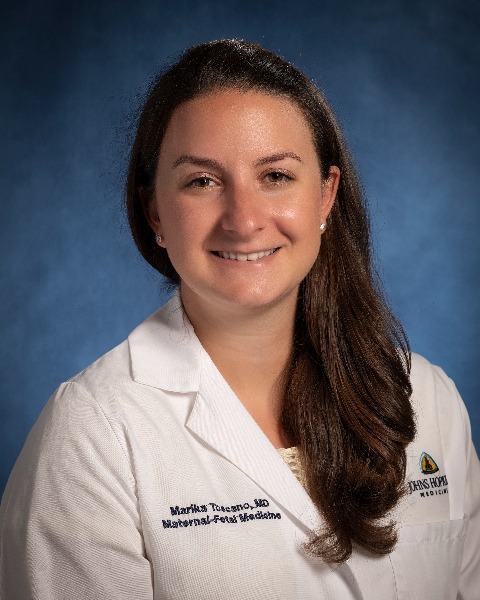Obstetric Quality and Safety
Poster Session 4
(1164) The Impact of an Independent, Academic Midwifery Practice on Labor and Delivery Unit Culture

Marika Toscano, MD (she/her/hers)
Assistant Professor, Maternal-Fetal Medicine
Johns Hopkins University School of Medicine
Baltimore, MD, United States
Stefanie J. Hollenbach, MD, PhD (she/her/hers)
Assistant Professor, Division of Maternal Fetal Medicine, Department of Obstetrics & Gynecology
The University of Rochester Medical Center
Rochester, NY, United States- HL
Heather Lane, CNM
Midwife
University of Rochester Medical Center
Rochester, NY, United States - HT
Helene Thompson-Scott, CNM
Midwife
University of Rochester Medical Center
Rochester, NY, United States - MH
Megan Hogan-Roy, CNM
Midwife
University of Rochester Medical Center
Rochester, NY, United States - CL
Clare Lennon, MD
University of Rochester Medical Center
Rochester, NY, United States 
Eva K. Pressman, MD
Chair, Professor, Department of Obstetrics and Gynecology
University of Rochester Medical Center
Rochester, NY, United States
Primary & Presenting Author(s)
Coauthor(s)
Study Design:
Single center, longitudinal prospective cohort study of L&D providers following a natural “intervention” consisting of the addition of an independent, academic, midwifery-only practice group (not supervised by Obstetricians) to the traditional University hospital physician-led L&D unit. The Labor Culture Survey (VanGompel et al. 2018) was administered to L&D providers longitudinally at baseline (May 2020), 1 year (June 2021), and 2 years (June 2022) after this “intervention” (referred to as epochs 1, 2 and 3). Surveys were completed voluntarily, electronically via RedCap and scored on a Likert-type scale (5: strongly agree; 1: strongly disagree). The primary outcome, difference in mean score over time, was analyzed using one-way ANOVA and Tukey’s post-hoc test for significance. Cesarean birth rates pre- and post-intervention were compared as a secondary outcome.
Results: 91 total surveys were completed (response rate: 37%). Respondents were majority female physicians (91.2%) aged 39.3±0.5 years. Following the “intervention”, physicians were more likely to welcome doulas as members of the labor support team (p=0.017), support more doula services (p=0.013), and more midwifery services (p=0.042) (Figure 1) as strategies to reduce Cesarean birth rates. Simultaneously, the University hospital saw a decrease in the total Cesarean birth rate from 37.5% in 2019 to 31.9% in 2021 (p< 0.001).
Conclusion:
Midwifery-style L&D care is known to promote and support physiologic birth in uncomplicated pregnancies. Changing L&D culture and subjective norms via the addition of a midwifery-only practice to a traditional L&D unit has the potential for meaningful changes in perceptions, actions, and behaviors by physician providers.

